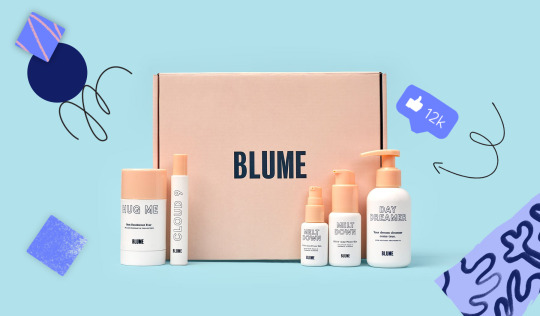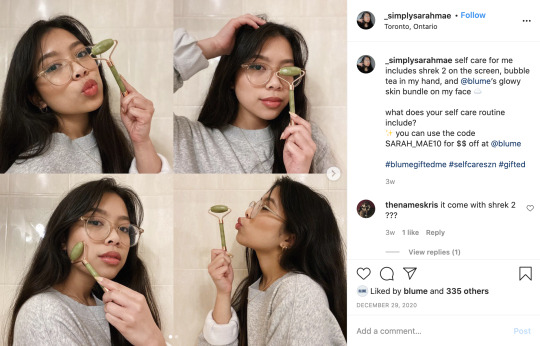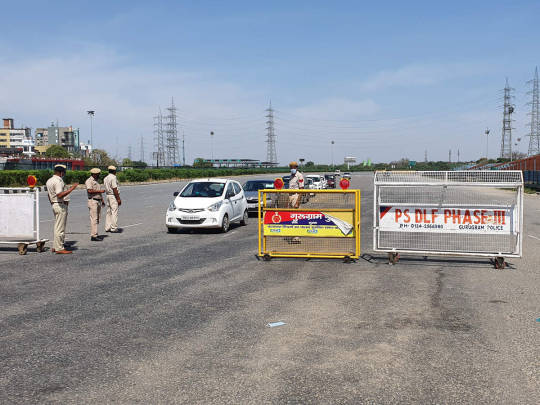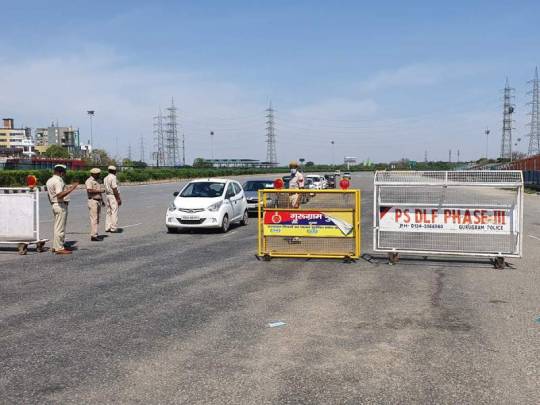#so stay tuned for all of that…. SOMETIME in the undefined future!!
Explore tagged Tumblr posts
Text
love when i say shit like “when i post this gifset/meta/fic it’s over for you bitches” as if there is any PRAYER of me doing any of that any time in the near future… it is over for me. i am the bitch.
#it’s not ACTUALLY over… i’ll get to all of it eventually#i’m just still settling in to this job#and there are a lot of unique stressors/distractions at the moment#which are temporary but are taking up a lot of my energy/brainspace rn#so stay tuned for all of that…. SOMETIME in the undefined future!!#this post sponsored by me seeing a gifset of Flint and Once Again Remembering the Flint-Billy parallels gifset i have meticulously planned#but never actually executed#i keep threatening to make it and then Not Making It#but be not fooled - the threat is Real. and it is Coming when you least expect it
4 notes
·
View notes
Text
Selling on Social 101: How Blume Markets and Sells to a Gen Z Audience

As the buying power of Gen Z grows, marketers at businesses of all sizes are searching for novel ways to connect with this audience and build lasting customer relationships.
It'll come as no surprise that social media platforms are of the best ways to connect with this generation — which includes today's teenagers and those in their early 20's. But marketing to Gen Zers means much more than simply posting pretty pictures and memes.
So what does it take to stand out and connect with this valuable audience in 2021?
One brand that has mastered the art of marketing to Gen Z is Blume, a fast-growing skin, body, and period care brand on a mission to break boundaries and smash taboos.
In this interview, you'll hear directly from Janice Cheng, Brand and Community Manager at Blume, and you'll learn:
How to build a brand that connects with Gen Z
How to market and sell on social media
The key to understanding Gen Z's preferences on social media
Successful strategies to use when marketing to Gen Z

This post is part of the #BufferBrandSpotlight, a Buffer Social Media series that shines a spotlight on the people that are helping build remarkable brands through social media, community building, content creation, and brand storytelling.
This series was born on Instagram stories, which means you can watch the original interview in our Highlights found on our @buffer Instagram profile.
Tell us more about you! What's Blume all about and what's your role there?
My name is Janice and I’m based in Vancouver! I’m the Brand Manager at Blume—a fast-growing skin, body, and period care brand on a mission to break boundaries and smash taboos. I joined the team back in June 2019 as the 3rd hire and EA to our founders Taran & Bunny. Now, I’ve been in this Brand role for almost 9 months.

Why do you think your Gen Z audience connects with your brand?
Gen Zers are conscious (smart) consumers and the most connected generation ever. Growing up with social media, they want transparency, community, and look for brands that align with their values. I think Blume checks off all those boxes in a really genuine way! Since day one, we’ve been more than just our products. Blume is breaking stigma by having conversations about extremely normal, yet still taboo topics, like acne, puberty, periods, and sex ed. As I’m sure most of us know, these are “issues” that carry well into adulthood, so a lot of our audience are millennials as well.
Gen Zers are conscious (smart) consumers and the most connected generation ever. Growing up with social media, they want transparency, community, and look for brands that align with their values.
We’re also a brand that cares. We launched the thestatesofsexed.com, Future World Shapers Award (created for Gen Z change-makers), and generally produce engaging and shareable content. More importantly, we prioritize using our platform to amplify the voices of our community and speak up on issues important to us; this includes climate change, the Black Lives Matter movement, and even our pandemic response. Our audience teaches us a lot, and more than anything, they’re our friends! This is all translated through our brand voice cohesively across all channels.
Tell us about a recent social media campaign. What made it so successful?
We’re only about 2.5 years old but one of my fave moments was our in-house Blume Celebrates Skin campaign (a campaign focused on being confident in our own skin is undefined and unrestricted by our physical appearances or the bumps and blemishes on our skin). We were only about five people then (half of our team now) and it was so much fun because it came from our hearts. Quickly and organically, it grabbed the attention of Allure and Daily Mail UK. Sometimes metrics are tricky with these kinds of campaigns. Say someone comes across this campaign and finds new strength and bravery in their natural skin. Although can’t quantify feelings, the reviews and customer testimonials are invaluable to our team.

Instagram post found here.
BUT! Meltdown (our best-selling acne treatment) continues to be our top community favorite and campaigns like Celebrate Skin reinforce that. Ultimately, our social media goal is to increase engagement, and this campaign accomplished that for us. We’re about to have some of our biggest campaigns this new year! So stay tuned.
Where do you find inspiration for Blume’s social media content?
Recently, a lot on TikTok (obviously), community pages like Girlboss, and also meme pages. We have an #inspo Slack channel where we share things we see on our feeds and Explore pages and what’s circulating in our own friend's groups! Pro tip: start an #inspo channel whether just for yourself or with your team.
How does Blume leverage user-generated content to connect with its Gen Z audience?
Community is core to all we do. Beyond our products, for us, it’s about adding value to Gen Z, and user-generated content (UGC) is a huge part of that. Using UGC is more impactful than using traditional models or lifestyle images because UGC is by actual people in our community—reflecting a range of real skin. It's the best way to relate to this audience!
Using UGC is more impactful than using traditional models or lifestyle images because UGC is by actual people in our community—reflecting a range of real skin.
Also, Gen Zers are so creative because producing content is second nature to them so partnerships together are so fun. I love looking through our tagged posts every week and seeing people embrace their shelfies and natural skin. We give them full creative freedom! So rather than believing what we have to say about our products, you should believe our community through UGC, their captions, reviews, and experiences.

Instagram post found here.
How does Blume embed UGC, customer testimonials, and reviews across all its marketing channels?
We have an incredible tiny team of two that keeps the rest of the team, especially marketing, up to date with all inquiries, trends, and themes of the week. For example, our Meltdown before & after shave has always been highly effective for us because a photo equals a thousand words.
In skincare, especially clean beauty care, it's really important for us to spotlight the effectiveness of the product and how our products actually work. We’ll use before/after photos and other UGC in ads, Instagram story features, and email newsletters. With permission, of course.
On a regular week, we try to post UGC and/or testimonials about 3-4x on our social media channels.
In skincare, especially clean beauty care, it's really important for us to spotlight the effectiveness of the product and how our products actually work.
What are Blume’s most successful social platforms for selling and why?
Definitely Instagram—still cracking the code for TikTok. Ultimately, Gen Zers are the trendsetters and determine what’s next. Something can come and go overnight so we have to be quick to pivot, adapt and execute. We can plan all we want but our best performing posts often tend to be non-product focused ones. If we had a Meltdown post planned on a day where the world actually needs more empathy and love, we’ll swap it for a journal prompt post or check-in.
What advice do you have for brands that want to start selling on social media?
Make a list of brands that you love and dig deep into the “why.” For Blume, the core criterion for selling on social is based on value; we focus our marketing on educational content about our products and brand, community building through UGC campaigns and partnerships, and aesthetic shareable graphics.
Also, GET. ON. TIKTOK. Whether to start your brand page or just to get in touch with Gen Z culture, it’s worthwhile I promise you. Here are three easy things you can start right away: write copy like a human (not a robot), have fun with emojis, and start following people to bring eyes to your page!

Fllow Blume on TikTok here.
For Blume, the core criterion for selling on social is based on value; we focus our marketing on educational content about our products and brand, community building through UGC campaigns and partnerships, and aesthetic shareable graphics.
How do you stay up to date on Gen Z trends?
Personally, I follow Gen Z brands that I admire, read lots of Glossy and Beauty Independent, and ask our awesome Influencer, Lead Eman, for the 411 on what’s cool and what’s not. I also used to scroll TikTok for 4 hours a day (lol) for simultaneous entertainment and market research.
What's your favorite Blume product and why?
I’d like to say Meltdown because that’s everyone's #1 and I’ve had a lot of stress acne through 2020, BUT my runner-up is definitely Hug Me, our natural deodorant. Random fact: the probiotics, our secret ingredient, has adapted to my body so well I hardly need deodorant anymore. It’s also unscented so I recommend it to EVERYONE. I might be biased but these two are also my faves because their names are so fun to play with when copywriting. 👋
Thanks for Bluming with us, Buffer friends! ❤️
We hope this interview with Janice helps you get started with or double down on your social media efforts. You can follow Blume on Instagram here!
Have any questions for Janice? Feel free to reply with your questions to the Twitter post below and Janice or someone from the Buffer team will get to them as soon as possible.
Selling on Social 101: How Blume Markets and Sells to a Gen Z Audience published first on https://improfitninja.weebly.com/
0 notes
Text
Hit hard by the virus and lack of demand, India's trucking industry now battles shortage of drivers
New Post has been published on https://apzweb.com/hit-hard-by-the-virus-and-lack-of-demand-indias-trucking-industry-now-battles-shortage-of-drivers/
Hit hard by the virus and lack of demand, India's trucking industry now battles shortage of drivers

As India went through its initial 21-day lockdown period, the entire transportation ecosystem, including road freight movement, came to a screeching halt – and among the worst hit were its fleet owners.
From April 20th, many of the curbs placed on movement of trucks will see some easing, but according to the Indian Foundation of Transport Research and Training (IFTRT), Indian trucking now battles shortage of drivers. Since more than 50% of the 50 lakh trucks are already off the road due to the unavailability of drivers.
The Indian trucking industry deploys more than 8 million drivers and 12 million helpers. As a baseline, 30 million people are directly employed by the trucking industry and more than 150 million people depend on it for their bread and butter, say industry estimates.
Undoubtedly, the large scale meltdown has led the sector to skid off its promising track, thereby pushing thousands of fleet owners to the brink. Experts caution that the real impact of the nationwide lockdown would be long-term.
Logistics platform WheelsEye analysed over 30,000 fleet owners and 3 lakh plus trucks in India, and found that these fleet owners have been hit the hardest. There is also a real chance that India might end up witnessing a massive NPA problem from the commercial automotive sector.
The findings by the tech based ecosystem, with a fleet of 4 lakh trucks reveal that on a scale of 1 to 5, 5 being the highest, Covid-19 has impacted the lives of the fleet owner to the extent of 4.115. The impact has been so severe that 62.50% of fleet owners preferred to stop all work for the safety of their drivers or due to less demand in the market, notes the platform’s survey.
“With the lockdown in effect and little certainty around the situation for the next three months, the future of more than 150 Million people is under dark clouds,” highlights Sonesh Jain, Founder Member, WheelsEye.
The platform further found out that the average KM Per Day for fleet owners had consistently fallen by more than 95%. From an average run of 140 KMs, they are now clocking less than 10KM/day. The data from about 30,000 fleet owners show that the majority of in transit trucks are stuck as it is wherever they were.
More than 50% of India’s (organised long haul) trucking fleet are now without drivers, experts fear even if the lockdown is lifted, the logistics sector may not see an immediate uptick since most drivers have gone back to their native places. Fear of the virus, no work and lack of sustenance in the cities and transportation hubs, have meant most drivers have gone back to where they belong
From bad to worse According to Sachin Haritash, Founder, Mavyn Digital Trucking, not just anything near 50%, but organised long-haul vehicles are facing the absence of drivers to the tune of staggering 98%.
“With most drivers fleeing away to their native homes, we don’t see any immediate recovery,” he says. Concurring with Haritash’s view, Gazal Kalra, Co-Founder of trucking-logistics unicorn Rivigo, states that because of the lockdown, 70-80 % of truck drivers are not on the job now.
Many truck drivers were caught in logjams at city borders, unfortunately carrying non-essentials, which meant they could neither enter a city nor return to the warehouse. This was a dreadful situation for drivers.
ET Online

A border checkpoint between Delhi and Gurugram. (Pic: Pranbihanga Borpuzari)
“If it’s a matter of 2-3 days, drivers could have managed, but here we are talking about three weeks. With little money on them, and roadside food joints and dhabas closed — their only lifeline, why should drivers risk their lives being on the road,” wonders Kalra. The problems were compounded since there were no workers to load and unload goods. This meant even trucks carrying essential items were sometimes stuck because they could not load or /unload.
SFOs’ catch 22 moment Rivigo’s Kalra highlights that in India, more than 90% of fleet owners belong to the Small Feet Owners (SFO) category where the owner-drivers, own up to 5 vehicles. Such players also don’t have the wherewithal to secure business demands on their own. These generally get their demand inputs through transport brokers, but with the whole transportation ecosystem at a standstill, there is no demand on offer for such players.
Logistics business has a minimal cushion and cannot sustain a long term loss of business, asserts Cogos’ Prasad Sreeram. “Few of the organised fleet owners are looking at utilising moratorium, but are not sure if the liabilities could be cleared if the recovery spreads to multiple quarters,” he adds.
Also, while big companies do possess the wherewithal to secure government letters showing proof of carrying essential goods, SMEs may not have the resources to obtain these documents in a short interval of time.
According to Cogos, the Achilles’ heel of the sector is that the earnings have dipped to zero for many, while fixed costs like EMI, rents have stayed. “The moratorium could give relief to a few organised players, not for all. The second worry is for the vehicles stuck, the costs of keeping the fleet (detention) and safety of the goods could be irrecoverable,” highlights Prasad Sreeram, Founder and CEO of the Bengaluru-based startup.
Further, living hand to mouth, SFOs on an average have not received any load in the past three weeks. This is adding to the irrecoverable losses already piling up for the segment. WheelsEye’s above quoted survey also found that among 200 fleet owners, 96% of them were anxious about missing out on the EMIs. Thus, experts believe the Government should be ready to expect the NPAs to rise further in coming times.
Talks of solutions LetsTransport CEO and Co-Founder, Pushkar Singh looks at the situation differently. He believes the spread of Covid-19 and the subsequent lockdown can be treated as two separate events with different implications on the wider ecosystem.
Stressing that while it’s true that due to the fear of the virus, most drivers and migrant workers are afraid to continue working and have travelled back to their native places, he also finds fault in the heavy handed manner in which authorities enforced the lockdown in the first few days.
“These are the daily wage earners and are dependent on these businesses for their livelihood. If these problems are addressed, they would be more than willing to return to work,” he remarks.
Further, to mitigate the impact of the lockdown, Raj Saxena, Founder & CEO of logistics intelligence platform LogisticsNow, underlines that IT can be an enabler here. He suggests all logistics companies should be given electronic passes (transferable on a mobile phone) for their drivers to use and travel back/ report back to duty, go pick up loads/directly deploy where they are most needed (this can start now, each mobile electronic pass can be tagged to the Aadhar/driving license of the driver if possible. Such a move would also be the precursor to the National Registry of Truck Drivers, he opines.
Local Governments and large fleet owners should jointly plan travel return arrangements for key “driver clusters”- villages/districts which are home to several thousand drivers like Mewat in the north, Anantapur in the south etc, he further suggests.
if(geolocation && geolocation != 5 && (typeof skip == 'undefined' || typeof skip.fbevents == 'undefined')) !function(f,b,e,v,n,t,s) if(f.fbq)return;n=f.fbq=function()n.callMethod? n.callMethod.apply(n,arguments):n.queue.push(arguments); if(!f._fbq)f._fbq=n;n.push=n;n.loaded=!0;n.version='2.0'; n.queue=[];t=b.createElement(e);t.async=!0; t.src=v;s=b.getElementsByTagName(e)[0]; s.parentNode.insertBefore(t,s)(window, document,'script', 'https://connect.facebook.net/en_US/fbevents.js'); fbq('init', '338698809636220'); fbq('track', 'PageView');
Source link
0 notes